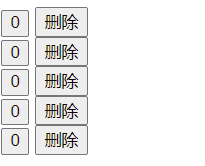
在Vue中使用v-for渲染列表时,默认使用就地更新策略。该策略默认是基于索引的,规定在列表绑定的数据元素顺序变化时,不会重新创建整个列表,而只是更新对应DOM元素上的数据。以下代码实现了一个TODO列表的勾选、添加和删除功能:
<!DOCTYPE html>
<html>
<head>
<title>In-Place Update Example</title>
<script src="https://cdn.jsdelivr.net/npm/[email protected]/dist/vue.js"></script>
</head>
<body>
<div id="app">
<ul>
<li v-for="(todo, index) in todos" :key="index">
<input type="checkbox" v-model="todo.completed">
{{ todo.text }}
<button @click="removeTodo(index)">Remove</button>
</li>
</ul>
<button @click="addTodo">Add Todo</button>
</div>
<script>
const app = new Vue({
el: '#app',
data: {
todos: [
{ text: 'Learn Vue.js', completed: false },
{ text: 'Build an app', completed: true },
{ text: 'Deploy to production', completed: false }
]
},
methods: {
removeTodo(index) {
this.todos.splice(index, 1);
},
addTodo() {
this.todos.push({ text: 'New Todo', completed: false });
}
}
});
</script>
</body>
</html>
该策略模式是高效的,避免了大量的DOM重排重绘。
然而,该策略基于一个前提:列表项内部的内容不依赖于子组件的状态或临时的DOM状态。如违背该前提,就可能导致意外,因为Vue不会重新创建子组件或恢复临时DOM状态。
下面代码实现了v-for列表项内容依赖于子组件的状态而导致意外的情况:
<!DOCTYPE html>
<html>
<head>
<title>In-Place Update with Child Component</title>
<script src="https://cdn.jsdelivr.net/npm/[email protected]/dist/vue.js"></script>
</head>
<body>
<div id="app">
<!-- 使用 v-for 渲染子组件列表 -->
<child-component v-for="(item, index) in itemList" :key="index"
@remove="removeItem(index)"></child-component>
</div>
<script>
Vue.component('child-component', {
template: `
<div>
<!-- 子组件的内容和状态 -->
<button @click="increment">{{ count }}</button>
<!-- 删除 -->
<button @click="$emit('remove')">删除</button>
</div>
`,
methods: {
increment() {
this.count++;
}
},
data(){
return{
count:0
}
}
});
const app = new Vue({
el: '#app',
data: {
itemList: new Array(5).fill(null)
},
methods: {
removeItem(index) {
this.itemList.splice(index, 1);
}
}
});
</script>
</body>
</html>
我们先点击某项计数器,再删除该项:

为了解决该问题,我们为每一项绑定一个唯一的key属性:
<!DOCTYPE html>
<html>
<head>
<title>In-Place Update with Child Component</title>
<script src="https://cdn.jsdelivr.net/npm/[email protected]/dist/vue.js"></script>
</head>
<body>
<div id="app">
<!-- 使用 v-for 渲染子组件列表 -->
<child-component v-for="(item, index) in itemList" :key="item.id"
@remove="removeItem(index)"></child-component>
</div>
<script>
Vue.component('child-component', {
template: `
<div>
<!-- 子组件的内容和状态 -->
<button @click="increment">{{ count }}</button>
<!-- 删除 -->
<button @click="$emit('remove')">删除</button>
</div>
`,
methods: {
increment() {
this.count++;
}
},
data(){
return{
count:0
}
}
});
const app = new Vue({
el: '#app',
data: {
// 为每一项添加一个id
itemList: [
{ id: 0 },
{ id: 1 },
{ id: 2 }
]
},
methods: {
removeItem(index) {
this.itemList.splice(index, 1);
}
}
});
</script>
</body>
</html>
效果如下:

那么就有疑问了:为什么前面代码中的key属性绑定了index没有用呢,index难道不是唯一的吗?很简单,这是由于我们删除的是数据项,而不是数组索引,使用id就不会有这个问题,删除一项连带着删除了该唯一id。
标签:count,index,Vue,text,app,更新,解析,id From: https://www.cnblogs.com/LiJunLin1231/p/17629952.html